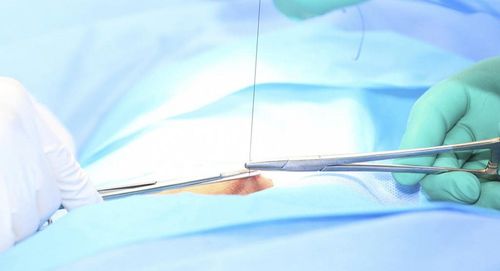This is an automatically translated article.
The article was professionally consulted by Specialist Doctor I Nguyen Thi Man - Doctor of Obstetrics and Gynecology - Department of Obstetrics and Gynecology - Vinmec Danang International General HospitalIn a normal pregnancy, PAPP-A levels gradually increase. If during the first trimester of pregnancy the concentration of PAPP-A in the mother's blood decreases, the fetus is at risk of Down, Edward and Patau syndrome.
1. What is PAPP-A quantification?
PAPP-A (Pregnancy Associated Plasma Protein A) is a glycoprotein secreted by the placenta present in maternal serum. PAPP-A combines with maternal age, weight, fβ-HCG levels and fetal nuchal translucency for prenatal screening - one of the prenatal testing steps.Low levels of PAPP-A are associated with an increased risk of chromosome abnormalities 21 (causes Down syndrome), 18 (causes Edwards syndrome) and 13 (Patau syndrome).

2. What is PAPP-A normal?
The concentration of PAPP-A was determined based on enzyme-labeled chemiluminescence immunoassay.In the first trimester of pregnancy, if the fetus has Down syndrome, the concentration of PAPP-A in the mother's blood will decrease, while in the second trimester, the concentration of PAPP-A will remain normal or only slightly decreased, so PAPP-A is only used during the first trimester of pregnancy for prenatal screening.
During pregnancy, the normal value of PAPP-A parameter in pregnant women's blood after correction is equal to 1 MoM. The low and high cut-off values of PAPP-A < 0.4 MoM to assess the risk of birth defects are as follows:
In Down syndrome: PAPP-A levels tend to decrease and opacity the nape of the neck increases. Nuchal translucency is of great value in assessing the risk of chromosomal abnormalities. If the fetus has a nuchal translucency < 3mm, it is classified as low risk (lower risk of Down syndrome). If the fetus has a thick nuchal translucency of 3.5-4.4 mm, the rate of chromosomal abnormalities is 21.1%; If the fetus has a thick nuchal translucency of ≥ 6.5mm, the rate of chromosomal abnormalities is up to 64.5%. In Edward's syndrome: PAPP-A levels decrease. In Patau syndrome: low levels of PAPP-A. If the adjusted risk is 1:100, it is considered high risk (positive) and if the adjusted risk is 1:100, it is considered low risk (negative). count).
3. When is the PAPP-A blood test?

This test applies to pregnant women from 11 weeks to 13 weeks 5 days and is not contraindicated for anyone.
This is a technique that has been around for a long time and has been deployed into routine testing at Vinmec Hospital systems nationwide.
Included in the prenatal screening test kit (Double test - PAPP-A, free bHCG) is now included in the routine tests indicated in the obstetric examination packages with the goal of being safe for the mother and the baby's health. little.
This is a test kit to help screen for the risk of Down syndrome (3 chromosomes 21), Patau syndrome (3 chromosomes 13), Edwards syndrome (3 chromosomes 18), the risk of neural tube defects (closed spine). not sealed) and anencephaly (a fetus without a brain); The results obtained will be calculated together with the mother's age, weight, height of the mother and the age of the fetus,... thanks to a specialized software built on the basis of millions of studies - survey of obstetricians to be able to assess the risk of the fetus having birth defects.
With advantages: The test runs on Roche's immune system and Beckman Coulter's immune system always adheres to strict test quality management procedures, ensuring accurate test quality for the public. effective diagnosis and treatment.
Modern machines such as: Unicel DxI 800 automatic immunoassay analyzer with speed of 400 tests/hour (Beckman Coulter/USA) connected to Power Processor automatic sample transport system.
Automated immunoassay system with 1200 tests/hour Cobas 6000 (e601 + c501) (Roche/Japan)
Automatic immunoassay analyzer with capacity 80 tests/hour Cobas e411 (Roche) /Japan).
Using the latest calculation software: Vinmec International General Hospital system uses software that uses Nasal Bone index to combine support in diagnosing fetal malformations (no hospital has Hai Phong uses this index). Along with a team of doctors and technicians with many years of experience, you can be assured and satisfied with the quality of service.
Please dial HOTLINE for more information or register for an appointment HERE. Download MyVinmec app to make appointments faster and to manage your bookings easily.














